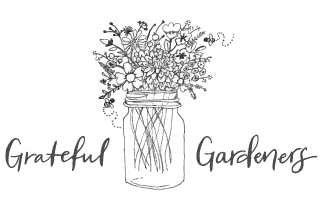Growing Green things green
Comedian Jim Gaffigan once mused that “Organic is a grocery term that means “twice as expensive””. I have to admit, I once thought as many consumers did, that organic agriculture seemed like more hysterics than an actual concern for my and my family’s health. And why DID it have to cost so dang much?!? As I became educated on the food production in this country and around the globe I slowly came to see why farmers should be growing as green as possible and more importantly why the produce cost that much more.
When Sarah and I started our flower farming adventure in 2018 we knew we wanted to try and grow organic if we could, without any real sense of what that actually meant in terms of the day to day operations of a flower farm. We are both nature loving, tree hugging, environmentally minded people. Sustainable and organic practices had to be a high priority for us if we were to move ahead with this business. As we entered our second full year of growing in 2019, it became painfully clear how difficult it would be to actually maintain those principles. It’s one thing to say you will only use OMRI listed pesticides to keep your bug pressure down, its another thing to see your entire dahlia crop being decimated by cucumber beetles and all you can think about doing is going scorched earth on those little bastards!! I’m sure we aren’t alone in having those extreme thoughts about the specific bane of a farmer’s existence.
However, anything worth doing in the service of the planet is worth doing right. We’ve taken the time to learn from other farmers, read some of the books, tried a few tricks, and we now believe we can actually maintain this ethos that we hold so dear. It really starts with healthy soil. A strong plant grows from fertile soil, and a strong plant can fight off disease and pests better than weak plants. It’s that simple. We compost heavily, we maintain high organic matter, we fertilize with compost/worm tea, we don’t till, we mulch, and we utilize mycorrhizal inoculant (more on that later). This provides us with a rich and verdant soil structure that gives our plants a head start against the agents of demise buzzing around the garden.
Beyond the soil strategy, we have instituted an aggressive spraying schedule, rotating each week with Neem Oil and soap, Botaniguard ES, and Safer 3 in 1 concentrate, all OMRI listed products. Spraying at regular intervals keeps the pest pressure at bay, but rotating types of attacks also keep the bugs from adapting and from niche pests taking hold. We also utilize mechanical controls like going around and squishing those pesky beetles (so satisfying!) and a bug net that you can sweep overhead of the plants to capture those fast jumping cucumber beetles. We utilize mulches to help suppress weed growth and to feed the fungal networks. 2020 was the first year that we started seeding our soil directly with Mycorrhizal fungi, the symbiotic partner with plants which drastically improves nutrient and water uptake for plants. We believe this method is a real game-changer for our plant babies and have seen promising results so far!
Overall we are moving towards the greenest way to grow any plant; Aquaponics. For those of you who have not heard about aquaponics, it is a fascinating and powerful method that should be more widely adopted. I won’t go into a lot of detail here (follow the link above to learn about its advantages), but what we’ve learned is that it will provide us with greater peace of mind that we are growing in harmony with nature, AND we are gaining an advantage over other farmers by implementing this practice. There are a few barriers to getting these systems started, but the advantages justify the investment you make. We’ve seen some small successes so far in our small DIY system and this is only the beginning!
We truly believe in an “all of the above” approach to sustainable and organic farming. The best part is new techniques, treatments, and approaches are being developed every year! Come join us for the bright future that awaits us all if we start farming in tune with our “Mother Earth”! It is the greatest feeling to know you are producing flowers responsibly, profitably, and prolifically.
Next week on the blog…
What we learned in season 2




